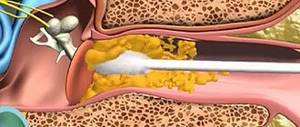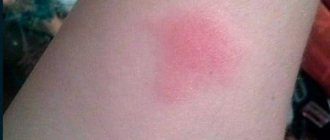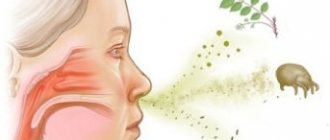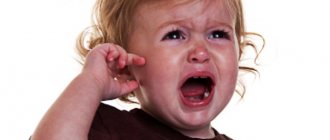If inflammation of the outer ear occurs due to infection from the outside, then the causes of otitis media most often lie in the auditory tube. In a healthy person, the middle ear is usually sterile - constant ventilation and discharge of mucous secretions through the auditory tube into the nose maintain this. However, if the auditory tube stops working normally, for example, due to inflammation of the nose or throat (usually with ARVI), microbes penetrate into the middle ear - this is not far from otitis media. The middle ear begins to intensively produce mucus to deal with viruses or bacteria, and soon this mucus can turn into purulent discharge. As pus forms, its pressure on the membrane increases, and a hole may form in it - perforation.
What you need to know about otitis media?
There are several types of otitis media, the treatment of which is radically different: acute otitis media, exudative otitis media and chronic suppurative otitis media.
If inflammation of the middle ear develops quickly and lasts no more than a month, then this is usually acute otitis media.
Six symptoms of acute otitis media:
- pain in the ear or behind the ear - shooting or constant aching;
- hearing loss and possibly tinnitus;
- increased body temperature;
- purulent discharge from the ear;
- general weakness, symptoms of intoxication, irritability, tearfulness (in children) and other symptoms in the presence of ARVI;
- sometimes dizziness, nausea and vomiting.
If you or your child has at least one of the listed symptoms, this is a reason to urgently consult an ENT doctor.
Causes
The ways in which viruses enter the ear space are different. Once in the ear canal, these microorganisms begin to actively multiply and feed on healthy cells, destroying them.
Otitis media can be caused by any type of virus:
- influenza and parainfluenza;
- measles;
- mumps;
- rubella;
- herpes;
- rhino- and adenoviruses;
- cytomegalovirus;
- pathogens of tropical fevers;
- Epstein-Barr virus.
Most often, microorganisms enter the ear space from the nasopharynx. If there is an acute infectious process in it, pathogens migrate upward into the ear canal. Therefore, viral otitis media can become a complication of ARVI, pharyngitis, laryngitis, tonsillitis, adenoiditis, sinusitis, rhinitis and other inflammatory diseases of the respiratory tract of viral etiology.
Another way of infection can be the introduction of germs into the ear through the bloodstream. In diseases such as influenza, adenoviral or herpes infection, mumps, measles, rubella, mononucleosis, colonies of viruses constantly circulate in the human blood and, together with it, can move to any organ, causing inflammation and swelling of its mucous membranes.
Provoking factors causing the development of viral otitis include:
- acute and chronic diseases of the ear or nasopharynx;
- any virus carriage;
- constant hypothermia;
- general diseases of a viral nature;
- blood or lymph diseases;
- decreased immunity;
- seasonal outbreaks of influenza or other types of acute respiratory infections;
- anatomical features or defects in the structure of the hearing organ, nasopharynx, and facial bones of the skull.
Seven factors that provoke otitis media in preschool children:
passive smoking (do not smoke in the presence of a child!);
visiting kindergarten. At home, a child will never encounter such a variety of infections;
spring or winter, increasing the likelihood of ARVI;
feeding the baby in a horizontal position. It is in this position that there is a high probability of food reflux through the auditory tube into the middle ear;
artificial feeding up to 6 months of age. Artificial formula does not contain the immune factors that mother's milk has, and therefore a formula-fed baby is more susceptible to infections;
allergic rhinitis, causing frequent acute respiratory viral infections;
enlarged adenoids in children. Adenoids, normally located in the nasopharynx (at the border of the nose and mouth), when increasing in size, can close the openings of the auditory tubes, thereby causing otitis media.
What treatment will the doctor prescribe?
The first thing the doctor does is relieve the pain. To do this, he will prescribe analgesics in the form of syrup or tablets, as for otitis externa. If the eardrum is intact and there is no perforation, then treatment may be limited to ear drops with painkillers.
For children under 2 years of age, recommendations for prescribing antibiotics have always been stricter. However, the latest international recommendations for the treatment of acute unilateral otitis media in children aged 6 to 24 months are based on waiting tactics: 2-3 days from the onset of the disease indicate whether antibiotics should be prescribed. If the child’s well-being improves, then observation tactics are continued, but if the child does not recover or his condition worsens, antibiotics are resorted to.
In case of high temperature (above 39 ° C), general serious condition, severe pain in the ear, or if both ears are involved in the process, the doctor will not resort to waiting tactics, but will immediately prescribe antibiotics.
The first thing to do if you have ear pain is to take painkillers (analgesics). Antibiotics will take 24 to 72 hours to start working. For otitis media, antibiotics in most cases are indicated only if a clear positive effect from treatment with painkillers and ear drops has not shown within 2-3 days.
I have repeatedly had to operate on patients who allegedly did not respond to conservative treatment. And the whole point was in the wrong prescription of antibiotics. So remember: antibiotics are serious!
If there is no perforation in the eardrum, then there is no need for ear drops with antibiotics - the eardrum is impenetrable to drugs and their use does not make sense.
If the doctor sees a perforation, special ear drops with an antimicrobial composition are prescribed, which have a therapeutic effect by penetrating into the middle ear. It is also recommended to protect the ear from water.
Causes of the disease
While the child is small, his auditory tube is still short and wide, and, therefore, infectious agents can easily enter it from the nose, nasopharynx or oral cavity when coughing, sneezing or blowing the nose.
In newborns during childbirth, some amniotic fluid or the contents of their stomachs may enter the ear during regurgitation. Also, during the first year of life, a certain amount of embryonic myxoid tissue remains in the child’s tympanic cavity, which has not yet had time to transform into the mucous membrane.
This tissue is an excellent breeding ground for the development of infection and symptoms of otitis media in children, which requires treatment. The causes of otitis in little ones can also be the predominantly horizontal position in which they are, as well as adenoids, prematurity, weakening of the body by various diseases or malnutrition, artificial feeding, sucking a pacifier, infectious diseases, acute respiratory infections, acute respiratory viral infections, fungal infections, allergies, heredity.
Very often, acute otitis media in children, starting in one ear, spreads to the other, and bilateral acute otitis media appears in the child.
According to statistics, every second child in the first year of life had at least one episode of this disease in their anamnesis. Almost 90% of children under 3 years of age suffered from otitis media.
Repeated, that is, constantly recurring acute otitis occurs in 20% of children.
Typically, before the first symptoms of otitis media begin to appear, children first have a runny nose and/or cough that requires treatment.
Symptoms of inflammation of the middle ear in children of different age categories have some differences. Treatment for young and older children is also slightly different.
Manifestations of the disease in newborns and children under one year of age:
- Frequent, causeless crying and sudden screams;
- Refusal to breastfeed is sometimes accompanied by consent to drink from a bottle, since sucking movements in this case cause less pain. Hunger and thirst cause an irritable state;
- The child rubs the sore side of his head or ear against his mother’s hand or pillow and makes pendulum-like movements with his head;
- In the first days of the disease, increased excitability and intermittent sleep are observed;
- After several days of illness, the child’s behavior changes dramatically - he is depressed, spends a lot of time sleeping;
- Symptoms of intoxication of the body and disturbances in the functioning of the gastrointestinal tract appear - such as vomiting, loose stools;
- The child begins to lose weight;
- The temperature may not rise in the first days, but after 1-2 days of illness it rises to 39-40°C;
- After a few days, discharge from the ear appears;
When pressing on the ear, the child's response is unambiguous - from manifestations of noticeable anxiety to hysterical screaming in pain. Diagnosing otitis media in very young children is quite difficult, since there are diseases with similar symptoms.
Older children can more clearly indicate that they are bothered by ear pain. It is also easier for a doctor to differentiate otitis media in a child 2-3 years old from other diseases, since by this age, as a rule, there is already an anamnesis, the data of which the doctor can rely on during diagnosis.
Symptoms of otitis media in a child aged 3 years requiring treatment:
- The child clearly makes it clear that his ear hurts - he tugs, rubs, pulls his ear, points his finger at the painful area, complains in his “childish” language;
- The child becomes irritable, nervous, rude;
- Temperature above 38°C;
- Vomiting, diarrhea, lack of appetite, or inability to eat due to severe pain;
- Discharge from the ear may begin.
For example, if small foreign objects get into the ear, the child does not have a fever or discharge. If water gets into the ear, it can cause not only discomfort, but temporary hearing loss on one or both sides, but there are no symptoms such as pain and fever. When wax plugs form, the child’s hearing quality decreases on one side.
Symptoms of acute otitis media in middle-aged and older children and adolescents usually appear suddenly, and the disease is accompanied by decreased hearing in one or both ears, and acute pain of varying intensity. The pain usually gets worse at night.
Acute otitis in a child is classified depending on the duration of the disease. Symptoms vary depending on the stage of the disease:
- Stage 1 – there is a feeling of congestion in the ear, which may be accompanied by noise, but there is no elevated temperature. However, if an infection develops in the body, fever may be present from the first days of illness;
- Stage 2 – body temperature remains within 37-38°C for a long time, pain in the ear becomes sharp, noise and feeling of stuffiness progress and intensify;
- Stage 3 - the pain becomes almost unbearable, radiating to the tissues and organs adjacent to the ear - teeth, neck, throat, eyes. Hearing in the affected ear or ears (with bilateral otitis) decreases, the temperature rises;
- Stage 4 – the pain subsides, the temperature returns to normal. Tinnitus and hearing loss remain at the same level. The discharge of pus from the ear begins;
- Stage 5 – healing stage. The child’s condition returns to normal, inflammation subsides, and the perforation is scarred.
When a child complains of acute pain in the ear, cries and is capricious, this state of the baby will unbalance even the most persistent and experienced parent. Acute shooting pain in the ear is not easy for an adult to endure, let alone for children.
- Pain signals the appearance of an inflammatory process in the ear. That is, otitis media develops. According to statistics, by the age of five, almost every child has suffered from this disease at least once.
- To alleviate the baby’s condition and get rid of otitis, every parent should be able to distinguish the first signs of the disease, know what treatment is suitable for the child, as well as what measures need to be taken to prevent otitis in the future. Let's figure it out!
Our ear consists of three areas: outer, middle and inner. The first is the visible part of the ear, which in everyday life we call the ear. The middle and internal sections are not visible and have a complex structure. The appearance of acute inflammation of the ear in children can affect each of its parts, so the diagnosis is divided accordingly into external, media and internal otitis.
Two thirds of recorded cases of the disease are acute otitis media. In children under one to two years of age, this percentage is even higher. Since pathogenic microorganisms enter the middle ear from the nasopharynx.
- Acute inflammation of the middle ear is represented by catarrhal, exudative and purulent stages. Catarrhal inflammation is considered an acute inflammation of the initial stage. During this period, the patient begins to feel congestion in the ear and hearing loss.
- In the exudative form, a viscous secretion is formed - it is this that accumulates that causes pain. A distinctive feature of the acute process of this type of inflammation is suppuration from the ear.
- This is the most severe type of the disease, accompanied by high fever.
If acute otitis media in children is not treated, the development of internal otitis media begins - labyrinthitis. For children, this condition is extremely dangerous and requires proper treatment. Otherwise, the consequences of otitis media can be very serious.
- Based on the duration of the disease, otitis media is divided into acute, subacute and chronic. The acute course of the disease is characterized by a rapid onset, this condition lasts no more than three weeks.
- If otitis in a child lasts from three weeks to three months, we are talking about the subacute form. If an acute disease is not treated or the acute inflammatory process is treated incorrectly, the inflammatory process will become chronic.
- This disease will already last for more than three months.
As we mentioned, children are susceptible to ear diseases much more often than adults. And this is easily explained. The main reason for the development of the disease is directly related to the characteristics of the child’s auditory tube.
The anatomy of a child's eustachian tube is such that it is shorter and wider than the auditory tube of an adult. And the absence of bends allows the infection to freely penetrate from the nasopharynx into the middle ear cavity.
The causes of otitis media are:
- hypothermia or, conversely, overheating of the body;
- chronic infections in the body in children (for example, chronic inflammatory processes of the nasopharynx, from where the infection can easily get into the ear);
- adenoids;
- weak immunity;
- allergic rhinitis;
- ear damage;
- improper feeding of infants: breastfed children should not be fed lying on their back - in this position, milk can get from the nasal cavity and pharynx into the tympanic cavity and start an inflammatory process there.
Inflammation of the outer ear occurs when trying to clean the ears with foreign objects, during which infection penetrates into them. Otitis media can occur when bacteria enter the bloodstream through wounds and damage to the skin of the ear. Therefore, parents need to ensure that the baby never picks the ear canal with a sharp object.
Some parents are overly zealous, giving their children ear hygiene and cleaning wax out of their children every day, which is fundamentally wrong. Sulfur is a natural barrier against pathogens, so such excessive cleanliness opens the way for bacteria to distant areas of the ear.
The appearance of otitis externa can be caused by water that contains pathogens getting into the ear, for example, while swimming in polluted waters.
Exudative otitis media
Oddly enough, under the same conditions, otitis media can develop in the middle ear without inflammatory symptoms - this is exudative otitis media. And it is called that because a clear fluid, or, as doctors call it, exudate, accumulates in the middle ear. Such otitis is manifested only by ear congestion: a person feels as if water has entered the ear - and so it is. Only this water penetrates not from the outside, but from inside the ear.
There are two typical patterns of development of exudative otitis media. In one case, the pain in acute otitis media subsides and is replaced by persistent congestion. There is a feeling that the inflammation in the ear is decreasing, the redness of the eardrum is going away, the discharge stops, and the perforation is healing. But the functioning of the auditory tube has not yet had time to recover, and exudate begins to accumulate in the ear. This is more typical for children.
In another case, exudative otitis is caused by a sharp change in atmospheric pressure, which the auditory tube cannot cope with. If a patient complains that after a flight his stuffy ear still hasn’t gone away, and a week has already passed, it is highly likely that exudative otitis media can be assumed.
To establish a diagnosis, it is enough to examine the ear using a diagnostic microscope, which is equipped in any modern ENT office. To reliably confirm the diagnosis, a hearing test is usually performed - audiometry and tympanometry.
In most cases, otitis media goes away on its own - it just takes time for the ear to recover, usually several days. As soon as the auditory tube is restored, the exudate is eliminated on its own without any consequences. However, it happens that a week passes, a second, a third, but the congestion remains. In this case, treatment is necessary, and its tactics are different in children and adults.
If the doctor has diagnosed exudative otitis media in your child, do not panic. As a rule, it goes away without treatment, so the main recommendation when identifying exudate is observation for 2–3 months.
Otitis: description and types
The type of otitis directly depends on which part of the auditory organ is affected by the disease.
There are three types in total:
- External: appears as a result of injury to the outer part of the ear.
- Moderate: most often the result of viral or infectious diseases of the respiratory tract. In this case, the middle ear is affected.
- Internal: occurs mainly as a complication of otitis media. It is very rare, but is considered the most dangerous.
The external form of the disease manifests itself on the part of the auditory organ visible to the eye. In this case, external otitis may be:
- diffuse (damage to the eardrum with the formation of purulent masses)
- purulent limited (boils, pimples and other suppurations on the auricle)
Otitis media accounts for more than 90% of all cases of the disease. With it, the middle ear becomes inflamed, namely the tympanic cavity, which includes 3 sound ossicles.
Usually occurs as a result of the transfer of infection from the nasal cavity, but can appear as a result of injury or enter hematogenously.
It is divided into:
- acute, caused by a viral or bacterial infection and is accompanied by the formation of pus
- exudative, occurs as a result of blockage of the auditory tube
- chronic, lasts a long time, with the formation of a small amount of pus and hearing impairment
Video. Otitis in children: causes and treatment.
Acute otitis is usually a consequence of a purulent form of damage to the middle ear or a general infectious disease. The most severe type of inflammation, in some cases only surgical treatment can help. The course of any type of disease can be chronic or acute.
Common causes of otitis media in children
The most common cause of otitis media in a child is various colds. This occurs due to the structural features of the auditory tube in young children.
- They have it very short, but at the same time wide. Because of this, mucus during a runny nose or other acute respiratory disease can easily penetrate the middle part of the hearing organ and cause inflammation. This is also facilitated by the lying position of the baby, who does not yet know how to sit.
- Diseases of the tonsils or adenoids also often provoke otitis media. The cause may also be improper nose blowing, hypothermia and weakened immunity.
Signs
The disease is characterized by an acute onset. The baby may suddenly develop a temperature above 39 degrees. He becomes irritable, is constantly capricious or cries, sleeps restlessly, and refuses to eat. The child often turns his head, rubs it against the pillow, and tries to reach his sore ear with his hands.
In children under one year of age, a severe form of the disease may be accompanied by throwing back the head, sometimes vomiting, and loose stools. No leakage of pus from the ear is observed.
Children over 3 years old can already independently describe the symptoms. The child has complaints about:
- painful sensations in the ear, radiating to the temple area
- feeling of stuffiness, feeling of pressure
- hearing impairment
- noise in the ear
At the same time, the temperature rises sharply, the child becomes lethargic, experiences weakness, sleeps poorly, and loses appetite.
Treatment
Methods for treating otitis in a child
The entire range of measures necessary to treat otitis media in a child must be prescribed by a doctor. Attempts to get rid of the disease on your own lead to the loss of precious time and can only worsen the situation.
- Treatment begins with the use of nasal drops that have a vasoconstrictor effect: Nazol, Naphthyzin and others. An antiseptic solution (for example, boric acid) is instilled directly into the ear.
- For treatment, drugs such as Otinum, Garazon, Sofradex and others are used. Paracetamol is recommended as a pain reliever.
- In almost every case, the patient is prescribed antibacterial agents, for example, Amoxicillin, Flemoxin or Biseptol.
Treatment should not be started without consulting a pediatrician or otolaryngologist.
But there are times when it is not possible to immediately show the child to a doctor. Then, before visiting the clinic, you can drop drops with a vasoconstrictor effect (Naphthyzin) into his nose, and Otinum, which has an anti-inflammatory effect, into the sore ear.
The diseased hearing organ must be kept warm. A scarf, headscarf, scarf or hat is suitable for this purpose. In this case, you cannot use heating pads or compresses; in case of purulent otitis media, this can lead to serious complications.
Complications of inflammatory ear disease in a child do not arise just like that. Most often this happens as a result of late diagnosis of otitis media, untimely or incorrect treatment.
Most often, hearing is impaired, the child suffers from hearing loss, and complete deafness is possible. If treatment is delayed, the disease can develop into labyrinthitis (internal otitis) or take a chronic form.
- The consequence of incorrect or delayed treatment of otitis in a child may be the development of facial paralysis.
- More severe consequences occur in cases where the infection penetrates deep into the skull to the meninges - meningitis, encephalitis, sepsis.
- Otitis is not one of the dangerous diseases. Much worse are its complications and possible consequences. Therefore, it is important not only to start treatment as early as possible, but also to continue it until complete recovery. The disappearance of signs of the disease does not mean complete recovery. On average, otitis lasts about a month.
It should be remembered that otitis media is a very serious disease. It should be treated only under the supervision of a specialist. You cannot try to get rid of this disease on your own using folk remedies and methods.
Most likely, this will only worsen the situation or lead to a chronic course of the disease.
If you suspect otitis or after diagnosing it, it is strictly prohibited:
- warm the sore ear by any means or means
- at high temperatures, resort to compresses, especially those that have a warming effect
- if there is pus, try to remove it with a cotton swab or other objects
- ask the child to blow his nose from both nostrils at once
- pour various alcohol tinctures into the patient’s ears
- pierce purulent formations on your own
- use antibacterial drugs and other medications without a doctor’s prescription.
Prevention
Prevention of ear inflammation in a healthy child primarily involves strengthening his immune system.
It is also very important to maintain a normal level of air humidity in the children's room. To do this, you need to systematically ventilate it and carry out wet cleaning as necessary.
If the air is very dry, you can use special humidifiers.
If a child is already suffering from a cold, then to prevent otitis media you need to:
- give your baby plenty of fluids to drink
- bring down high body temperature in a timely manner
- rinse the child’s nose with saline solution (sold at a pharmacy, for example Aqualor)
- teach him how to blow his nose correctly
- keep the room temperature within 18-20 degrees
Otitis is a disease in which literally every minute counts. Any delay can lead to life-threatening complications. Therefore, at the first suspicion of otitis media in a child, you should immediately show him to the doctor.
Why is it not worth treating exudative otitis immediately?
Neither antibiotics, nor vasoconstrictor nasal drops, nor physiotherapy are completely ineffective in treating exudative otitis media. Moreover, antihistamines can cause even greater thickening of the exudate and thereby only worsen congestion and slow down the process of self-liquidation of the fluid. The only drugs that can speed up recovery are nasal corticosteroids, but whether or not to prescribe them is decided by the ENT doctor after an examination.
Try simple but useful remedies - chew gum more, blow up balloons, or blow out your ears yourself. All this can help restore the function of the auditory tubes.
In the vast majority of cases, exudative otitis media in children goes away without treatment, so you shouldn’t rush out for medications: you have two to three months left.
Other approaches are used to treat adults. In most cases, active action should be taken if the exudate does not disappear on its own after 2-3 weeks.
Cough after otitis media: why it appears and how to treat it
Otitis and cough are complicated forms of acute respiratory diseases.
Most often, situations where, after relief of all the symptoms of otitis, a cough suddenly begins, occur in children of early years, which is explained by the age-related characteristics of the structure of the Eustachian tube.
Before taking any treatment measures, it is necessary to understand the causes of the cough. Understanding the etiology of cough will help you choose the optimal therapeutic tactics and get rid of this unpleasant phenomenon as quickly as possible.
Causes
Coughing is a protective reaction of the body, thus trying to get rid of mucus accumulating in the bronchi.
The cough center, located in the medulla oblongata, is activated in response to irritation of the nerve endings located on the mucous membranes of the respiratory organs.
After its activation, a response occurs from the respiratory system: the person inhales, the muscles of the larynx, lungs, peritoneum and diaphragm contract synchronously, while the fissure remains closed.
When it opens, a jerky exhalation follows, during which the tracheobronchial secretion is expelled.
This reaction is considered a normal variant if attacks are repeated 10 to 15 times a day, mainly in the morning, immediately after waking up.
The cause of a dry pathological cough may be:
- acute respiratory viral infection;
- inflammatory process in the mucous membranes;
- allergy;
- bronchospasm;
- impairment of the patency of the upper respiratory tract due to the accumulation of tracheobronchial secretions with increased viscosity.
When you have a cold or during an allergic attack, copious mucopurulent discharge does not have time to be cleared from the respiratory tract and accumulates in the middle ear, causing local inflammation. This disease is called serous otitis media.
The auricle in babies is located at the same level as the nasopharynx and is connected to it by the Eustachian tube. The fluid can escape on its own through the external auditory canal, but most often this does not happen, since in children the tube is not as long and wide as in adults.
Cough after otitis occurs as a residual phenomenon. It is worth treating it if it is unproductive, lasts longer than two weeks from the moment of illness and is accompanied by general malaise. You can also watch this video:
Treatment options
A cough may appear as another complication of an acute respiratory disease, but before treating it, its nature should be assessed - perhaps this is a natural reaction on the part of the respiratory system, recovering from otitis media.
If the cough does not interfere with sleep, does not affect appetite and does not affect the general condition, in order for it to pass quickly, in most cases the following conditions are sufficient:
- Regular ventilation of the room.
- Maintaining optimal humidity (at least 60%) and temperature (about 20° C) in the children's room.
- Drinking plenty of water (at least 2 liters of clean water per day).
- Air purification from allergens (if an allergenic factor is identified).
If you follow these simple rules, the recovery process from otitis media will be much faster. As practice shows, on average, after a week the cough completely disappears.
Pathological dry cough from otitis media that persists for 3 weeks or longer is treated under medical supervision. They suggest using 3 types of antitussive drugs to eliminate it:
- suppressing the cough center (suppressants);
- improving sputum discharge (expectorants);
- combined.
Medicines are prescribed by a doctor based on examination of the nasopharynx and listening to the lungs, strictly in accordance with the type of cough, the patient’s age and the general clinical picture.
Cough syrups
The recommended form of antitussive medication for children is cough syrups. Their use will help relieve inflammation of the upper respiratory tract and eliminate irritation of the mucous membrane, without having a negative effect on the developing organs and systems of the child’s body.
Which syrup is suitable for treating cough - mucolytic, expectorant or antitussive - will be determined by the doctor, focusing on the frequency of coughing attacks and its nature (dry, productive, barking).
During treatment with syrups, improvement occurs already on days 5-7; children are advised to regularly spend time in the fresh air, eat a balanced diet and move more.
Physical activity improves the conditions for mucus discharge, which makes the recovery process faster.
Cough tablets
Cough medicines in tablets are more often recommended for adult patients or children over 12 years of age. This form of release has the fastest possible action and prolonged effect.
Relief occurs after the first dose of the medicine due to suppression of the cough center or dilution of sputum.
Taking tablets will help you return to an active social life as quickly as possible, improving coughing after bronchitis, otitis media or sinusitis.
According to the nature of their effect, tablets that eliminate dry cough are divided into 2 types:
- centrally acting drugs (narcotic and non-narcotic) block cough due to simultaneous inhibition of the cough and respiratory centers;
- Peripheral-acting drugs relieve irritation of the mucous membranes, soften cough due to the enveloping effect and eliminate it by blocking impulses entering the cough center from the irritated surface of the nasopharynx.
Tablets with mucolytic and expectorant effects are effective for residual effects localized in the lower respiratory tract - the main active ingredient reduces the viscosity, and plant extracts accelerate the discharge of liquid sputum. Such drugs do not work for dry cough, and their unreasonable use can lead to aggravation of the condition and the development of late complications of otitis media.
Folk remedies
There are many traditional methods for treating cough, but when using them, you should be especially careful about the patient’s condition, because the effect of their use does not occur immediately.
Sputum comes out much easier if you use products based on the following medicinal plants:
- raspberries (its fruits and leaves are taken for brewing);
- coltsfoot;
- oregano;
- chamomile;
- Linden.
To prepare a medicinal decoction, the plants need to be crushed, poured with hot water and kept in a water bath for 15-20 minutes, and then allowed to brew for an hour. The resulting decoction is filtered and taken in small portions 5-6 times a day.
To eliminate ear pain, which may appear from time to time after otitis media, alcohol tinctures of propolis are used. The use of this folk remedy will help in 2 weeks to get rid of residual effects and restore hearing that has worsened after otitis media.
Prevention
In order to prevent the development of complications after colds, which include cough from otitis, doctors recommend not to self-medicate ARVI and seek medical help at the first symptoms of a viral infection.
For parents of children who often suffer from otitis, doctors recommend taking special care to keep the nasal passages clean, conducting regular steam treatments and using a humidifier to relieve residual cough. If otitis media often recurs, it is worth consulting an immunologist, since the indirect cause of this disease is a decrease in the body’s defense mechanisms.
Possible complications
Otitis and the prolonged, hysterical cough that develops after it, being the most common complications of ARVI, with inadequate or untimely treatment can lead to the following negative consequences:
- irreversible damage to the integrity of the eardrum;
- hearing loss or deterioration;
- the occurrence of allergies, which, in turn, can provoke the development of bronchial asthma.
In the most severe cases, a complicated inflammatory process leads to mastoiditis, meningitis, abscess formation in the brain, and sepsis.
Source: https://nosuho.ru/uho/otit/kashel
In what cases should treatment be started immediately and not wait 3 months:
- if the child already has hearing loss caused by other reasons;
- if the child has severe hearing loss and delayed speech development;
- in the presence of autism and genetic diseases manifested by delayed psychomotor development;
- presence of blindness or significant reduction in vision.
The “gold standard” for the treatment of exudative otitis media in children and adults is bypass surgery of the tympanic cavity. This is a simple operation in which a miniature ventilation tube is inserted into the eardrum. It equalizes the pressure between the middle ear and the environment and allows exudate to be removed.
Five ways to avoid exudative otitis media:
- You should not breathe cigarette smoke: even with passive smoking, the mucous membranes of the nose and auditory tubes stop working normally;
- Refusal to attend kindergarten will help reduce the frequency of exacerbations;
- visit an allergist: an allergic runny nose is one of the causes of frequent otitis media;
- Do not feed your baby in a horizontal position;
- give preference to breastfeeding: mother's milk is rich in many immune factors that help the newborn resist infections.











